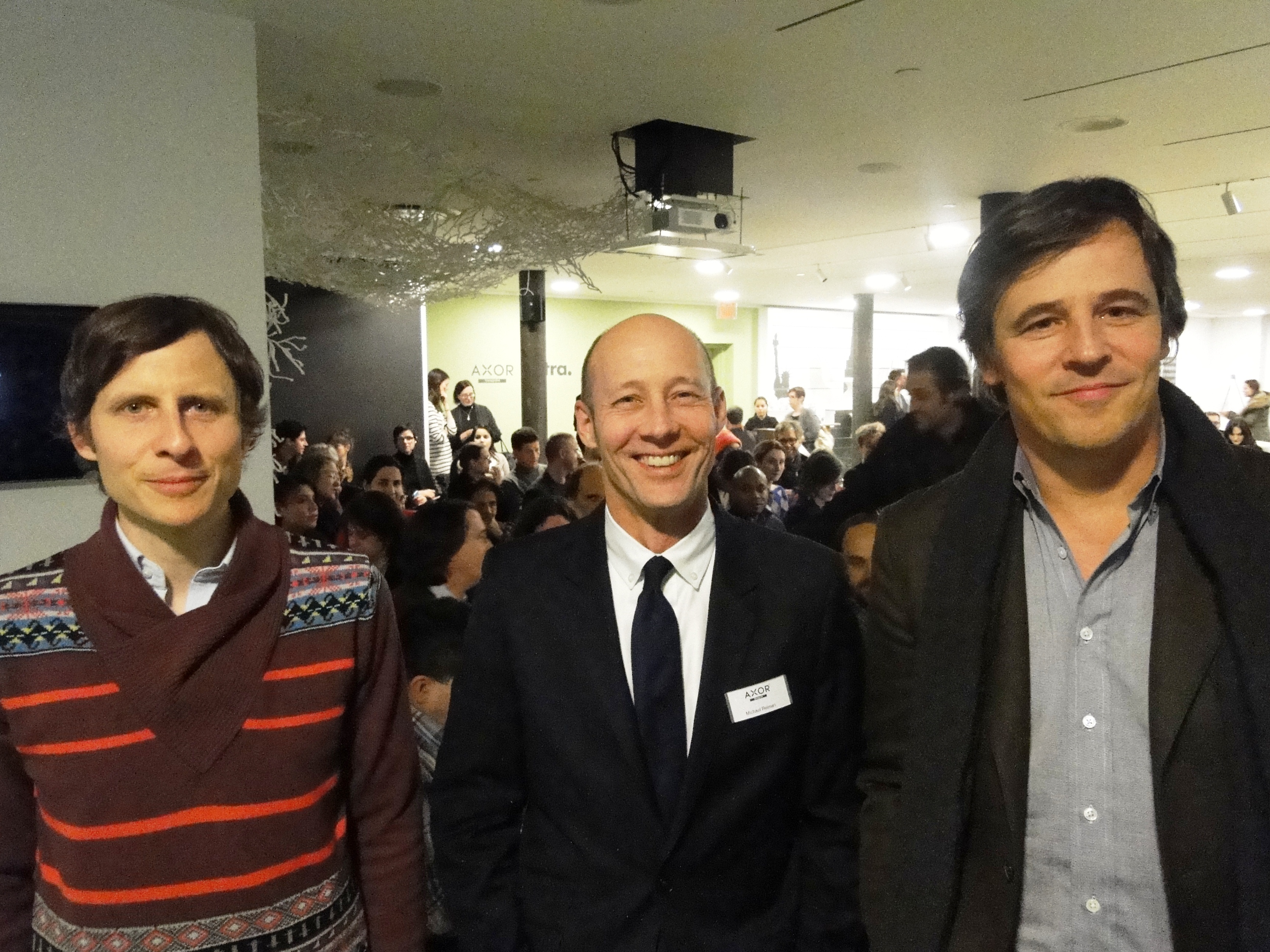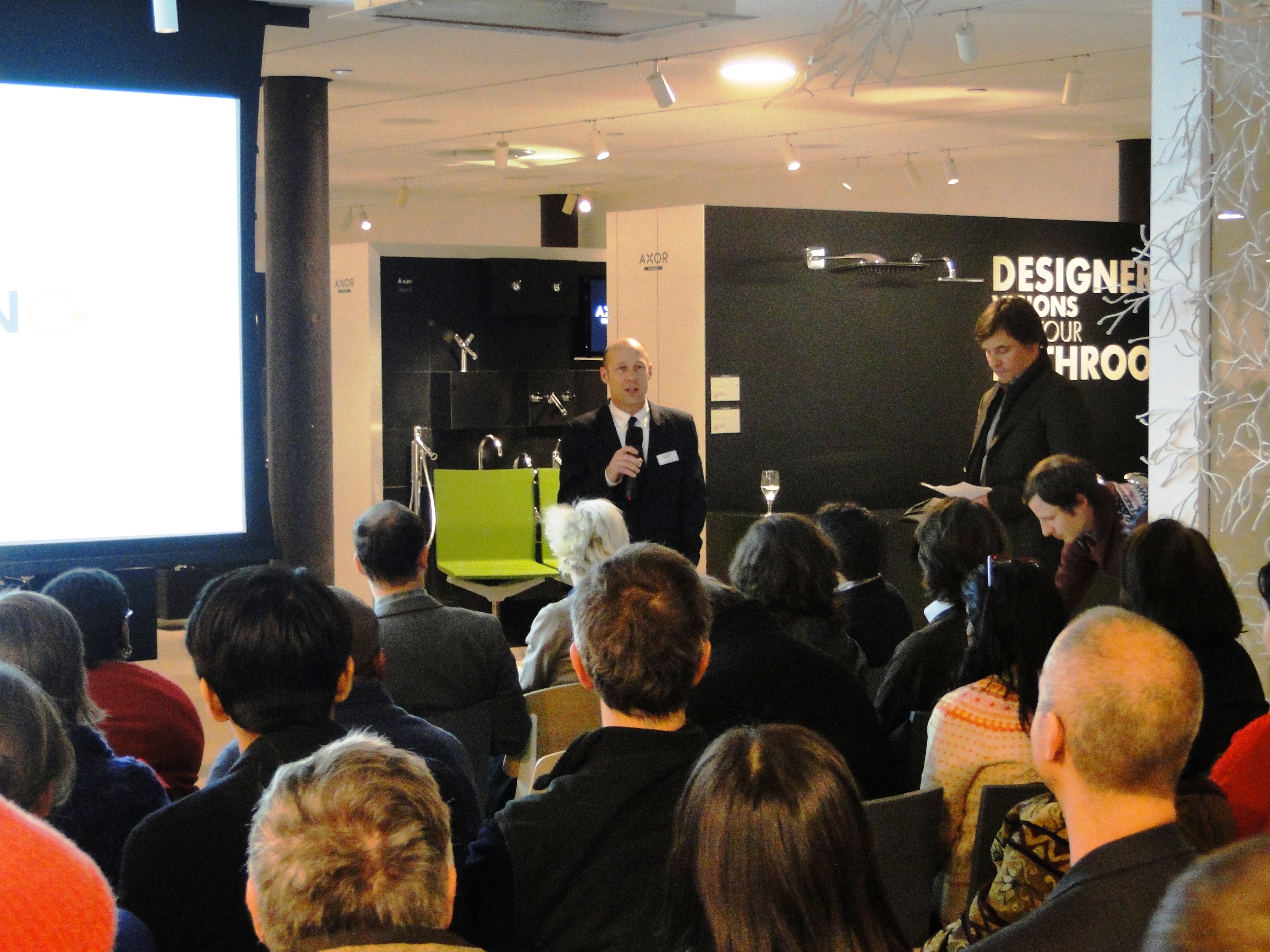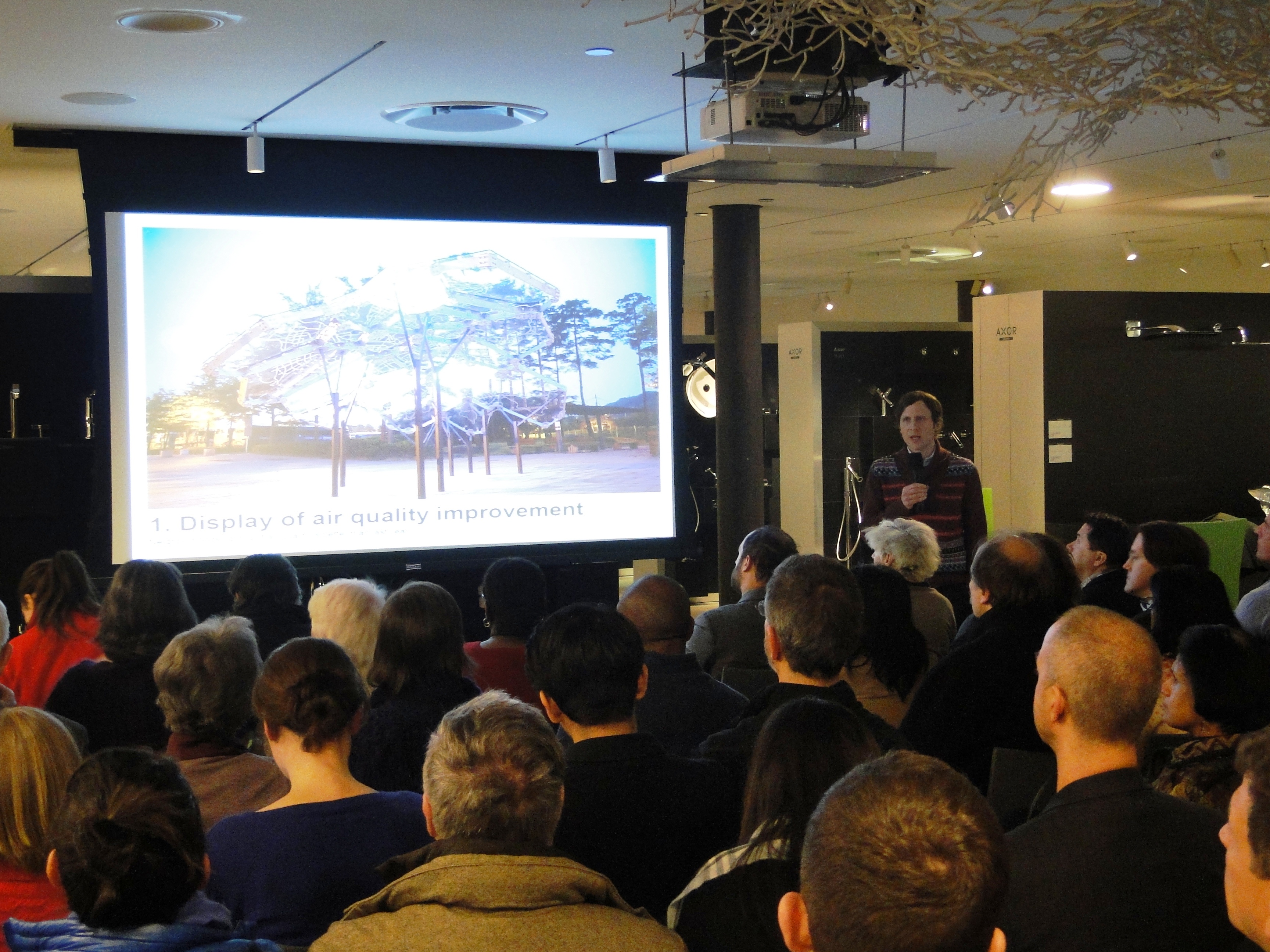by: Matt Shoor AIA LEED AP
As architects confront the new economic, environmental, and political realities of the 21st century, the essential practice of building design is called into question. How can one justify a conventional structure, composed of orthodox materials, when problems of natural resource management, overpopulation, and climate change plague the globe? Perhaps, as proposed by David Benjamin, Assoc. AIA, one can use architecture to address a number of these concerns rather than exacerbate them.
Benjamin, the principal behind the design firm The Living elides the question of how to treat lightning-fast technological change in a world still hamstrung by the irrefutable laws of physics. Instead, he elects to embrace the chaos and complexity of our contemporary era. To that end, Benjamin has crafted an interdisciplinary practice that draws from lessons learned in such fields as biocomputation, systems programming, and electronics. He hopes to apply new paradigms to building design and human interaction, with the long-term goal of true environmental and social sustainability.
According to Benjamin, providing real-time feedback to populations about their energy usage and ecological influence is one of the most basic (and successful) methods of protecting the planet. In two different projects, The Living designed “Living Light,” an aesthetically-pleasing interface that literally illuminates the impact of human life on earth’s natural processes. LEDs in the pavilion’s panels turn on or off to signify changes in air quality in various Seoul, Korea, neighborhoods. In “Amphibious Architecture,” the same technology was employed to inform New Yorkers of water quality fluctuations in the East River. An online application was also associated with these projects so that citizens could check the status of these environmental changes – and even engage the lights – using their mobile devices.
Through conversations with professionals outside of the field such as Jonathan Lee of Google UXI (who also presented at the final, full-house presentation at AxorNYC), The Living has learned that user interactivity and real-time information streaming are but a few of the tools the architect can utilize to guide humanity toward environmental change.
Another option is to exploit biological design to create new construction systems and technologies. For instance, in the Bio-Computation project, Benjamin and his colleagues envisioned crafting new materials by programming living bacteria to orient themselves in specific patterns. When the bacteria perish, their unique corporal characteristics (rigid or flexible bodies) have been interwoven to create thin sheets of material with microscopic structural properties. Benjamin proposes that such materials be used as skin systems on all sorts of projects, with the end goal being a movement away from petroleum-based plastics.
The concept of “growing” building systems, as Benjamin defines the practice, represents quite a paradigm shift for most architects. Designers are used to modifying existing products or testing the inherent characteristics of materials toward formal ends. Perhaps the profession is at the unique transitional moment in its history, when the architect-as-scientist will eventually rule the day. Designers will no longer react to technological change, but anticipate and define it.
Matt Shoor is an architect, writer, and educator currently employed by Macrae-Gibson Architects. He is a frequent contributor to e-Oculus, and can be reached at mshoor@gmail.com.
Event: Framed: Interfaces, Narratives, and the Convergence of Architectural and Internet Technologies
Location: Center for Architecture, 01.24.13
Speakers: David Benjamin, Assoc. AIA, The Living; and Jonathan Lee, Google UXI
Organizers: New Practices Committee, AIA New York Chapter
Underwriters: Axor Hansgrohe; NRI
Patrons: Sure Iron Works; Thornton Tomasetti
Supporter: Samson Rope
Media Sponsor: The Architect’s Newspaper











